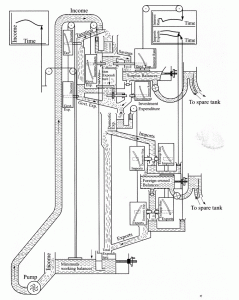Macro bootcamp
Updated: March 2018
The Macro Bootcamp is a short and intensive reading group that serves as a refresher for a graduate level class in contemporary macroeconomics. It aims to cover the seminal texts of the most prominent schools of thought, and act as a foundation for applications to current policy debates.

1. Advanced reading
Participants are advised to read the following book, which provides an excellent introduction to modern macroeconomics from a school-of-thought approach. The interviews at the end of the book in particular are worth attention:
- Snowden, Vane & Wynarczyk (1994) A Modern Guide to Macroeconomics, Edward Elgar
2. Reading list: key articles
Note: this reading list is heavily influenced by Tyler Cowen’s Macro I Reading List, Fall 2006 (.pdf). For a previous version of that, see here.
History of thought/background
- Woodford, Michael (1999) “Revolution and Evolution in Twentieth-Century Macroeconomics”, Working Paper
- Krugman, Paul (2000) “How Complicated Does the Model Have to Be?” Oxford Review of Economic Policy Vol. 16 No.4
- Mankiw, N. Gregory (2006) “The Macroeconomist as Scientist and Engineer,” Journal of Economic Perspectives, vol. 20(4), pages 29-46, Fall.
Real Business Cycles
- Long, John B. and Plosser, Charles. (1983) “Real Business Cycles,” Journal of Political Economy, 39-69.
- “The Prescott-Summers debate” (1986) Federal Reserve Bank of Minneapolis Quarterly Review Vol. 10, No. 4
- Stadler, George. (1994) “Real Business Cycles,” Journal of Economic Literature, XXXII, 1750-1783.
New Keynesian economics
- Clower, R., and Leijonhufvud, A., (1975) “The Coordination of Economic Activities: A Keynesian Perspective,” American Economic Review 65(2):182-188
- “Symposium: Keynesian Economics Today,” (1993) Journal of Economic Perspectives, 7(1):3-82*
- Mortensen, Dale and Pissarides, Christopher. (1994) “Job Creation and Job Destruction in the Theory of Unemployment,” Review of Economics Studies
- Taylor, John. (2000) “Reassessing Discretionary Fiscal Policy,” Journal of Economic Perspectives, 21-36.
Monetary policy
- Caplin, Andrew and Spulber, Daniel. (1987) “Menu Costs and the Neutrality of Money,” Quarterly Journal of Economics, 703-725
- Taylor, John B. (1993) “Discretion Versus Policy Rules in Practice,” Carnegie-Rochester Conference Series on Public Policy, 39, pp. 195-214
- “Symposium on the Monetary Transmission Mechanism,” (1995) Journal of Economic Perspectives, 9(4): 3-96*
- Shafir, Eldar, Diamond, Peter, and Tversky, Amos. (1997) “Money Illusion,” Quarterly Journal of Economics, 341-374
3. The podcast
Here is an audio version of my own lecture notes:
4. Further reading
The classic graduate text for macro is David Romer. It is the best treatment of the alternative growth models, and then has a chapter on each variable of national income accounting. Participants are advised to grapple with it after the bootcamp has taken place.
- David Romer (2011) Advanced Macroeconomics, McGraw Hill, 4th edition
It is also a good idea to see how various Austrian, Keynesian and Monetarist ideas can be integrated into a heterodox narrative. See Arnold Kling’s “Lectures on Macroeconomics“.
Note: the lectures above feed into the Monetary Theory and Policy Workshop